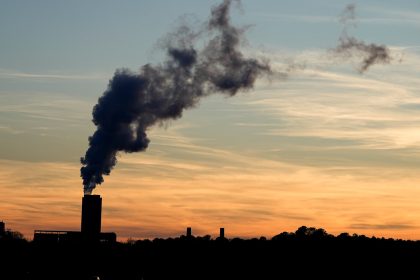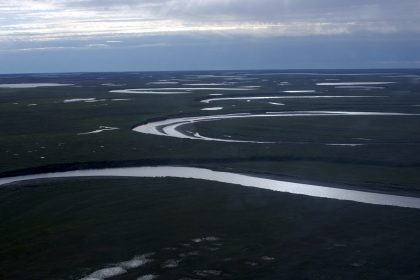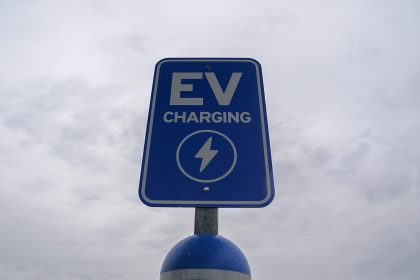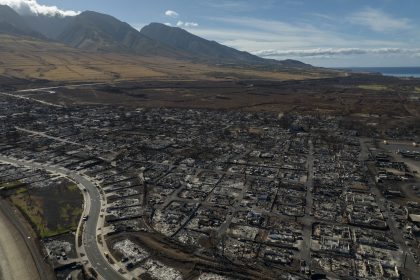In Mexico’s Dry North, Colorado River Adds to Uncertainty
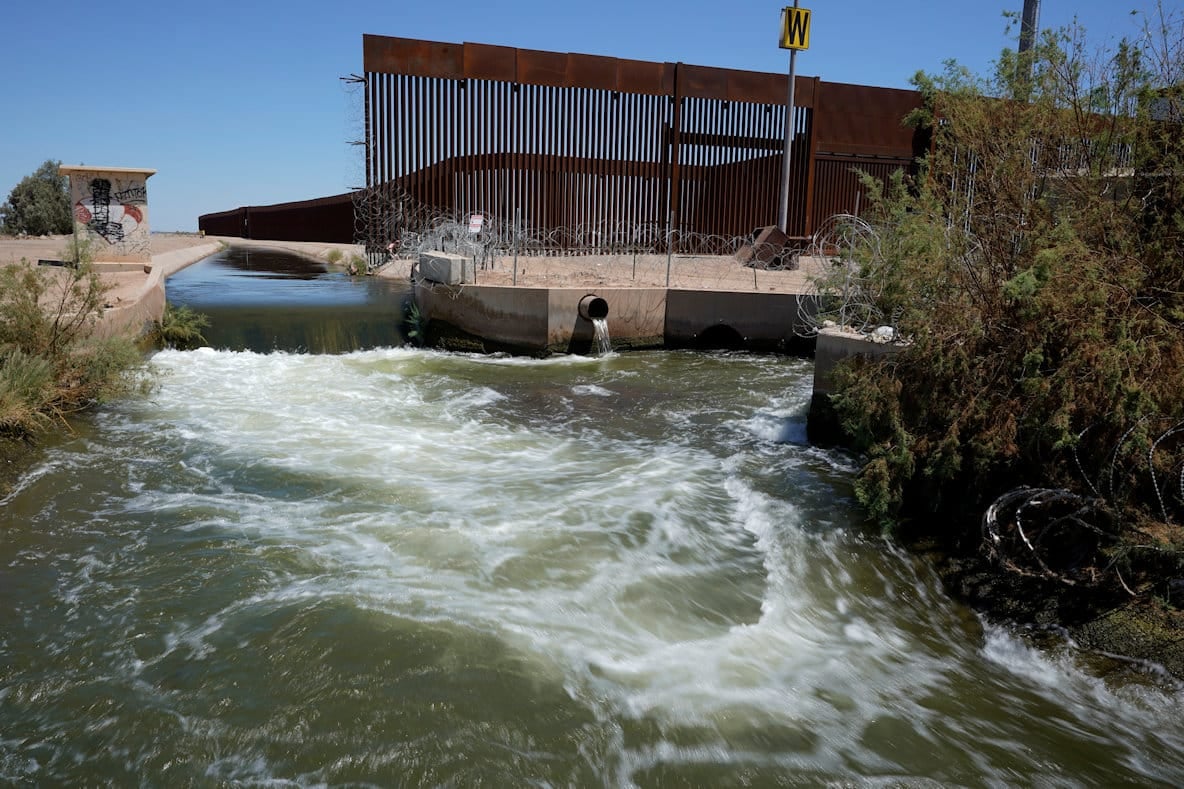
MEXICALI (AP) — When Gilbert Quintana, a farmer in the Mexicali Valley, learned he would soon lose 15% of his water supply, he did what he’s done before in a pinch: buy water from other growers in northern Mexico.
But Quintana worries that such workarounds won’t always be possible. The water used to irrigate his 2,000 acres (800 hectares) of Brussels sprouts, green onions and lettuce comes from the over-tapped Colorado River, which a megadrought in the American West due in part to climate change is rapidly depleting.
Buying water from other farmers is often the only way to grow the same acreage anymore, Quintana said, “but it’s short term.”
EDITOR’S NOTE: This is part of a collaborative series on the Colorado River as the 100th anniversary of the historic Colorado River Compact approaches. The Associated Press, The Colorado Sun, The Albuquerque Journal, The Salt Lake Tribune, The Arizona Daily Star and The Nevada Independent are working together to explore the pressures on the river in 2022.
By the time the Colorado River reaches Mexico, just a fraction of its water is left for the fields of the Mexicali Valley and millions of people in northwestern desert cities. Now, that supply is more at risk than ever.
Water experts and scientists say Mexico, at the end of the river, will need to find other water for the two northwestern states that depend on it. They say the country will also have to use its supply more efficiently. But Mexico has been slow to act.
“This hit us so fast that it took us a while to understand that it’s not a drought, it’s a new era. It’s a new regime,” said Carlos de la Parra, an urban and environmental studies professor at El Colegio de la Frontera Norte in Tijuana.
The National Water Commission declared an emergency in four northern states in July. Roughly 65% of the country was facing drought. A swath stretching from Tijuana to Matamoros, more than 1,500 miles (2,414 kilometers), is still bone dry, with water shutoffs common in cities and towns and key reservoirs near all-time lows.
Tijuana, the sprawling border city of 2 million people, is especially dependent on the Colorado. About 90% of its water comes from the river. Parts of the city have baked this summer as taps ran dry — sometimes due to mismanagement — with local water authorities blaming it on the drought.
“It’s mismanagement linked with drought,” said Mario López Pérez, a consultant at the World Bank who previously worked for Mexico’s national water commission.
To fill the gap, the government has sent water tankers, a common sight in Mexican cities, to neighborhoods without running water. People have also bought water from private sellers.
PLANS FOR DESALINATION, WATER RECYCLING
For more than a decade, officials in Baja California talked about building a large, desalination plant in a beach town near Tijuana. In 2016, state officials finalized a plan only to shelve it four years later, citing its high cost. The energy-intensive technology works by removing impurities from seawater. Mexico has other, small desalination plants elsewhere in the state and country.
Roberto Salmón helped oversee U.S.-Mexico treaties on borders and rivers as Mexico’s representative to the International Boundary and Water Commission between 2009 and 2020. He said a desalination plant would help Tijuana considerably.
“But discussions had been going on ever since I came into the commission,” Salmón said, “and there is no plant yet.”
A single aqueduct that crosses the state, including a rugged 4,000 feet (1,219 meters) mountain pass, brings Colorado River water into Tijuana. “It’s a one-source city,” Salmón said.
Officials and companies have similarly talked about using treated recycled wastewater to boost the city’s water supply for years, but the city has little to show for it.
UNCERTAINTY FOR FARMERS
Maria-Elena Giner, the U.S. representative to the IBWC, said the U.S. is looking at projects that could help Mexico conserve more Colorado River water with about $32 million that became available in 2017. The money could go toward lining leaking canals, helping farmers switch to water-efficient drip irrigation, and paying others to leave fields unplanted, she said.
But getting Mexico to use significantly less water — and fast — will be hard.
“We did a lot of the low-hanging fruit,” Giner said. “Our problem right now is how we do the more difficult projects in Mexico.”
Mexican officials, meanwhile, say water conservation should be balanced with needs.
“We need to evaluate how we can contribute,” said Francisco Bernal, who directs the National Water Commission in Baja California. “But we also have to see that there isn’t a severe impact on our allocation.”
Since 1944, Mexico has received slightly more than a third of what California can take each year from the Colorado River. Next year, it will lose 7% of that, or more than what the industrial border city of Mexicali — population 1 million — uses in a year, according to Alfonso Cortez-Lara, an environmental professor at El Colegio de la Frontera Norte in Mexicali who researches transboundary water issues.
Nicolás Rodriguez, the director of an irrigation district in the Mexicali Valley, said water shortages (this year, Mexico lost 5% of its overall supply from the river) are starting to cause friction between irrigation district managers and farmers.
Farmers in the Mexicali Valley produce an almost identical range of crops — most for U.S. export — as what’s grown just north of the border in California’s Imperial Valley. Leafy greens, broccoli, alfalfa, and wheat are common. The farms tend to be much smaller.
Rodriguez said he has encouraged farmers for years to grow more drought-resistant crops and plant tighter rows to use less water, which some farmers have taken up. Eventually, he thinks the government could restrict how much alfalfa and cotton Mexicali Valley farmers can grow.
According to a recent study, the state of Baja California could need nearly 30% more than it gets now from the Colorado River by 2030 to not be water stressed.
Cortez-Lara, the study’s author, said that while cities should reduce their water use, coming up with that much water would involve significantly cutting how much alfalfa and cotton is grown in the Mexicali Valley. But doing so would come at an enormous cost, he said, adding that Mexico’s federal government should play a role in funding and enforcing water efficiency.
Absent such action, water managers, experts and farmers like Quintana, who bought his way out of trouble this year, agree that shortages will only get worse.
“The less water there is,” Quintana said, “the more farmers in the Mexicali Valley will have to fight.”
Naishadham reported from Washington, D.C.
___
The Associated Press receives support from the Walton Family Foundation for coverage of water and environmental policy. The AP is solely responsible for all content. For all of AP’s environmental coverage, visit https://apnews.com/hub/climate-and-environment


















